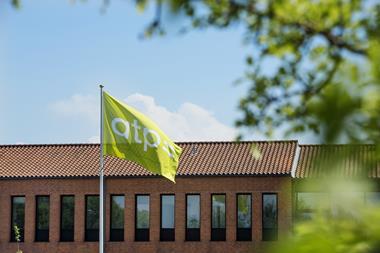NETHERLANDS - The five largest pension funds in the Netherlands saw coverage ratios tumble in the third quarter and said that indexation was out of the question, while benefits cuts were increasingly likely.
Funding decreases have been caused not only by volatile markets but also falling long-term interest rates - the criterion for accounting liabilities - which dropped from 3.8% to 2.7%, they said.
Although the assets of most of the five schemes rose following positive returns, increased liabilities have sharply overtaken assets.
The €235bn civil service scheme ABP - the world's third-largest scheme - saw its coverage ratio fall by 22 percentage points to 90% at quarter-end, while its assets decreased by €2bn due to a return of -2.9%.
It said its fixed income portfolio returned 1.3%, with government bonds, inflation-linked bonds and credits returning 3.5%, -1.6% and 1.1%, respectively.
Equities fell by 11.4%, with developed market and emerging market stocks losing 15.1% and 16%, respectively.
Joop van Lunteren, vice-chairman, said indexation was very unlikely given the situation and that measures such as a benefits discount were on the cards if the coverage ratio failed to improve this year.
Fellow vice-chairman Xander den Uijl added that ABP was now falling short of its recovery target and would consider a contribution rise.
He reiterated ABP's wish for a review of the current accounting method for liabilities, which makes pension funds dependent on the volatility of daily interest movements.
The €39bn metal scheme PMT saw its assets rise by €2.2bn on the back of a 3% return, but closed the quarter with a coverage ratio of no more than 84.3%, whereas its recovery plan aims for a funding of 96% at year-end.
Increasing interest rates caused its coverage to rise to 89% at present, it noted.
PMT said it benefited from the effect of decreasing interest rates on its 58% fixed income portfolio, which generated 12.4%.
However, most of its other assets classed registered losses, with equity falling by 11%.
Despite a quarterly return of 5.9%, the coverage ratio of the €24.5bn metal scheme PME dropped 12 percentage points to 86%.
PME reported positive returns for fixed income and property of 13% and 4%, respectively, while equity and alternatives delivered losses of 12.5% and 5.3%, respectively.
The €103bn healthcare scheme PFZW said it returned 0.6%, but saw its funding drop 19 percentage points to 91% during the past three months.
Peter Borgdorff, the scheme's director, said: "Our participants and pensioners can count on us that we do our utmost to prevent a rights discount, but we can't keep on shifting the bill into the future."
The €31bn pension fund for the building industry, Bpf BOUW, returned -4.3% on investments, but said its final result was improved by 9.2 percentage points following its extensive interest hedge on its liabilities.
Bpf BOUW is slightly ahead of its mapped out recovery, but also stressed that indexation was unlikely.
Meanwhile, pension supervisor De Nederlandsche Bank has said that pension funds will be exempt for a year from the legal obligation that their premium contribute to recovery, in case of a financial shortfall.
The exemption is granted under the condition that pension funds work out a solid financial set up, it added.
However, the exemption is not available for pension funds that have already used this option for 2011, nor for schemes that have to apply a benefits cut in 2012.












No comments yet